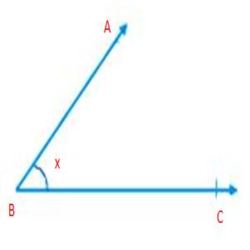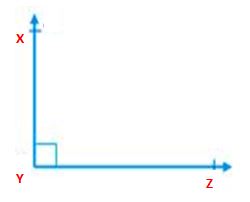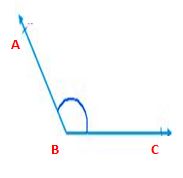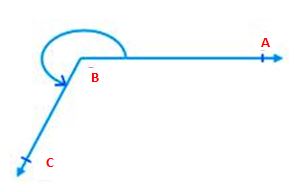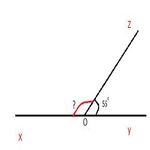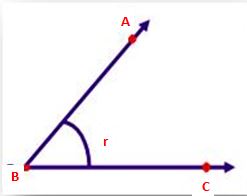While finding the factorization when monomial is a common factor, an algebraic expression can be expressed as the sum or the difference of monomials. Look at the different problems that have an algebraic expression with Monomial as a common factor. Also, find all Factorization concepts on our website with a detailed explanation.
How to Find Factorization of an Expression?
Below is the step by step guidelines on how to factorize an expression. They are along the lines
Step 1: Note Down the algebraic expression.
Step 2: Find the different terms of given algebraic expressions.
Step 3: Find the HCF of all the separate terms of the given algebraic expression.
Step 4: Express each term of the algebraic expression as the product of H.C.F and divide each term of the given expression by the HCF.
Step 5: Now use the distributive property of multiplication over addition or subtraction to express the algebraic expression as the product of H.C.F and the quotient of the expression divided by the H.C.F.
Step 6: In the final step, keep the H.C.F. outside the bracket and the quotients obtained within the bracket.
Solved Examples of Factorization when Monomial is Common
1. Factorize each of the following
(i) 4b + 20
Solution:
The given expression is 4b + 20
Firstly, find the HCF of given terms.
HCF of their numerical coefficients 4 and 20 is 4.
HCF of literal coefficients:
The lowest power of b is 0.
Therefore, the HCF of literal coefficients is nothing.
HCF of two or more monomials = (HCF of their numerical coefficients) × (HCF of their literal coefficients)
HCF of 4b + 20 is 4.
Multiply and divide each term of the given expression 4b + 20 with 4.
4(4b/4 + 20/4) = 4(b + 5)
The final answer is 4(b + 5)
(ii) 3m2 + 2m
Solution:
The given expression is 3m2 + 2m
Firstly, find the HCF of given terms.
HCF of their numerical coefficients 3 and 2 is nothing.
HCF of literal coefficients:
The lowest power of m is 1.
Therefore, the HCF of literal coefficients is m.
HCF of two or more monomials = (HCF of their numerical coefficients) × (HCF of their literal coefficients)
HCF of 3m2 + 2m is m.
Multiply and divide each term of the given expression 3m2 + 2m with m.
m(3m2/m + 2m/m) = m(3m + 2)
The final answer is m(3m + 2)
(iii) 6a2b – 3ab2
Solution:
The given expression is 6a2b – 3ab2
Firstly, find the HCF of given terms.
HCF of their numerical coefficients 6 and 3 is 3.
HCF of literal coefficients:
The lowest power of a is 1.
The lowest power of b is 1.
Therefore, the HCF of literal coefficients is ab.
HCF of two or more monomials = (HCF of their numerical coefficients) × (HCF of their literal coefficients)
HCF of 6a2b – 3ab2 is 3ab.
Multiply and divide each term of the given expression 3m2 + 2m with m.
3ab(6a2b/3ab – 3ab2/3ab) = 3ab(2a – b)
The final answer is 3ab(2a – b)
(iv) 9cd – 6bc
Solution:
The given expression is 9cd – 6bc
Firstly, find the HCF of given terms.
HCF of their numerical coefficients 9 and 6 is 3.
HCF of literal coefficients:
The lowest power of b is 0.
The lowest power of c is 1.
The lowest power of d is 0.
Therefore, the HCF of literal coefficients is c.
HCF of two or more monomials = (HCF of their numerical coefficients) × (HCF of their literal coefficients)
HCF of 9cd – 6bc is 3c.
Multiply and divide each term of the given expression 9cd – 6bc with 3c.
3c(9cd/3c – 6bc/3c) = 3c(3d – 2b)
The final answer is 3c(3d – 2b)
2. Factorize 18x2y2z + 12xyz.
Solution:
The given expression is 18x2y2z + 12xyz
Firstly, find the HCF of given terms.
HCF of their numerical coefficients 18 and 12 is 3.
HCF of literal coefficients:
The lowest power of x is 1.
The lowest power of y is 1.
The lowest power of z is 1.
Therefore, the HCF of literal coefficients is xyz.
HCF of two or more monomials = (HCF of their numerical coefficients) × (HCF of their literal coefficients)
HCF of 18x2y2z + 12xyz is 3xyz.
Multiply and divide each term of the given expression 18x2y2z + 12xyz with 3xyz.
3xyz(18x2y2z/3xyz + 12xyz/3xyz) = 3xyz(6xy + 4)
The final answer is 3xyz(6xy + 4)
3. Factorize the expression: 8m3 – 32m2n
Solution:
The given expression is 8m3 – 32m2n
Firstly, find the HCF of given terms.
HCF of their numerical coefficients 8 and 32 is 8.
HCF of literal coefficients:
The lowest power of m is 2.
The lowest power of n is 0.
Therefore, the HCF of literal coefficients is m2.
HCF of two or more monomials = (HCF of their numerical coefficients) × (HCF of their literal coefficients)
HCF of 8m3 – 32m2n is 8m2.
Multiply and divide each term of the given expression 8m3 – 32m2n with 8m2.
8m2(8m3/8m2 – 32m2n/8m2) = 8m2(m – 4n)
The final answer is 8m2(m – 4n)





